SpaceX Starlink Satellites,
Starizona Filter Slider, Optolong SHO Filters
Posted: 12 November 2019
As I mentioned on my First Light Optolong HA SII OIII Narrowband Filters report, I felt that I needed a filter wheel or slider system to eliminate the need to remove the camera from the telescope to swap the filters. I recently stopped by Starizona in Tucson and checked out their new Filter Slider System. The product had just arrived and after doing some fit checks with my DSLR adapters I decided to purchase the Slider and two extra drawers. We also tried out my Optec focal reducer, but due to the focal reducer design the Filter System would not work with it. Here is the system and how it looks on the telescope with the DSLR.
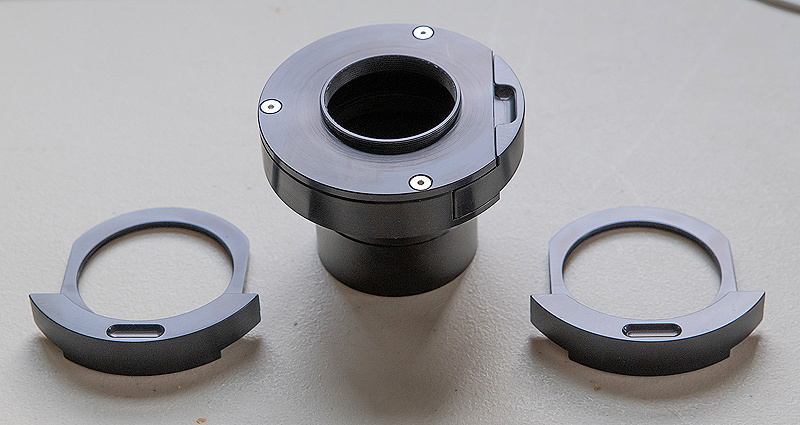
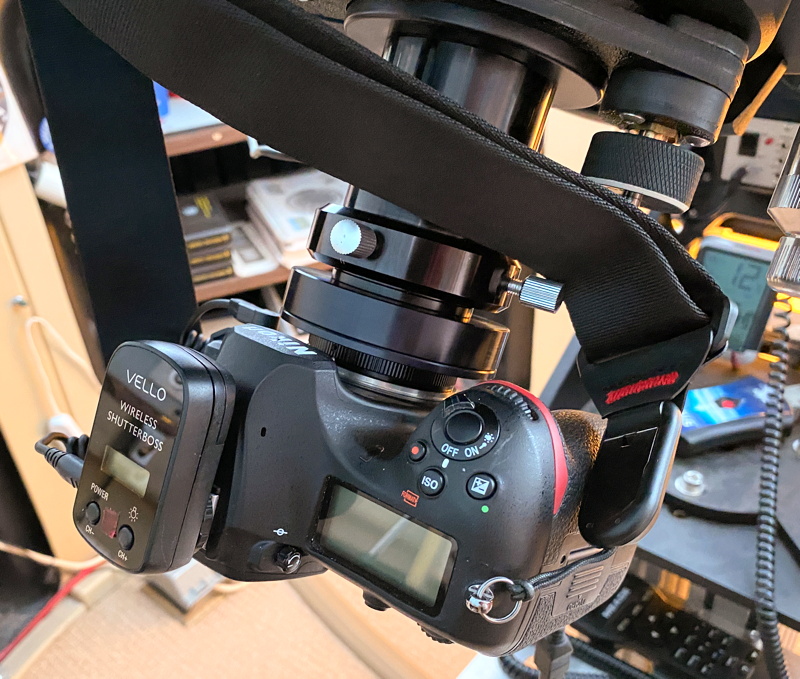
|
Open: Monday, 11 November 2019, 1807 MST Temperature: 77°F |
Session: 1405 Conditions: Mostly clear |
Equipment Used:
12" f/8 LX600 w/StarLock
2" 24mm UWA eyepiece
SHO Deep Sky Astronomical Filters
Camera:
D850 DSLR
1812 MST: LX600 ON, StarLock OFF, High Precision OFF.
Viewed Venus, very low in the western sky and behind a tree, 102X. Then Jupiter and four moons, also low in the sky, 102X. Lastly, viewed Saturn, 102X. Seeing was not very good at any of the planets.
I then began preparing to photograph this night's pass of the 60 SpaceX Starlink satellites that were launched earlier this day. I had photographed a Starlink satellites train after the first batch of 60 satellites was launched in May 2019. The Heavens-Above web site had only a preliminary "placeholder" prediction for this night's pass but I decided to try observing and photographing the pass anyway. I set up the D850 DSLR with a 24-70mm lens on a camera tripod on the observatory patio.
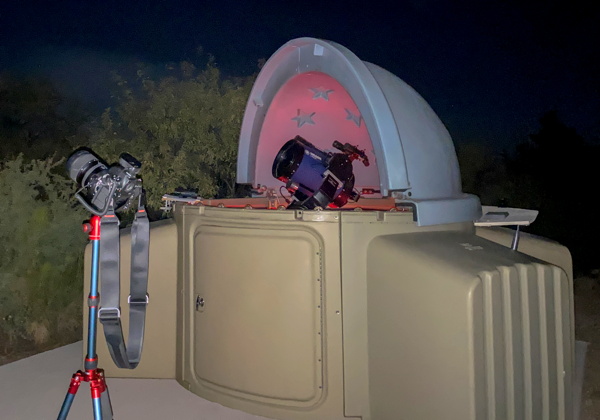
Took this photo (f/2.8, 1 second, ISO 1600, FL 32mm) of the sky showing the planets Saturn, Jupiter, and Venus.
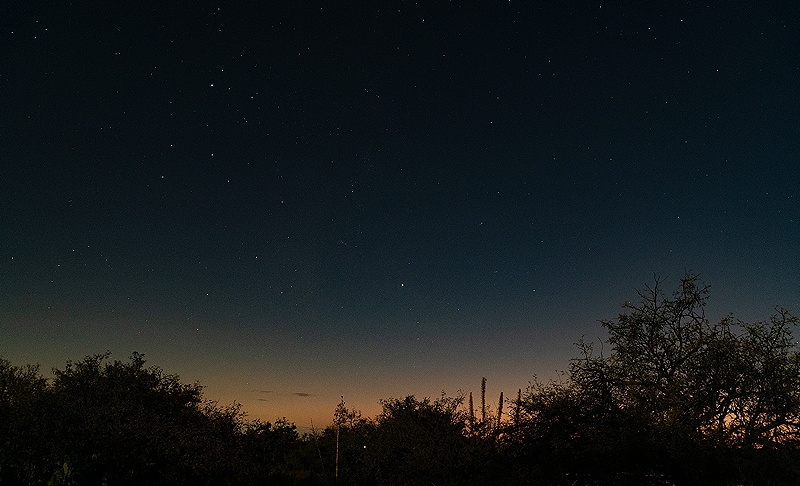
Mouseover or tap on image
1836 MST: viewed Jupiter and Saturn using 12x50 binoculars. A moon of Jupiter and the Ring of Saturn were visible.
I then began waiting for the Starlink pass to begin (predicted for 1855 MST). 1857 MST: I was shocked when I saw the satellite train almost due west and WAY BRIGHTER than I expected. One of the satellites was as bright as Jupiter (Mag. -1.9) and many were only slightly less bright. I repositioned the camera and took a photo. I repositioned the camera two more times for more photos. All three photos were at f/2.8, 10 seconds, ISO 1600.
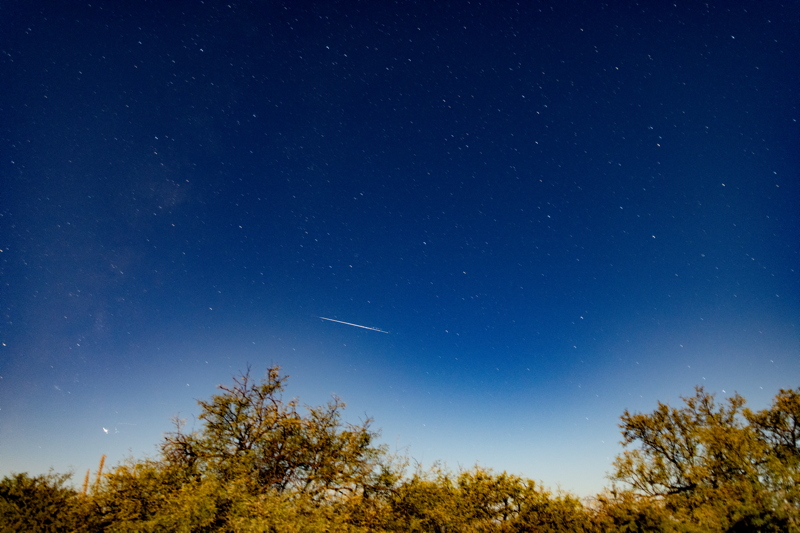
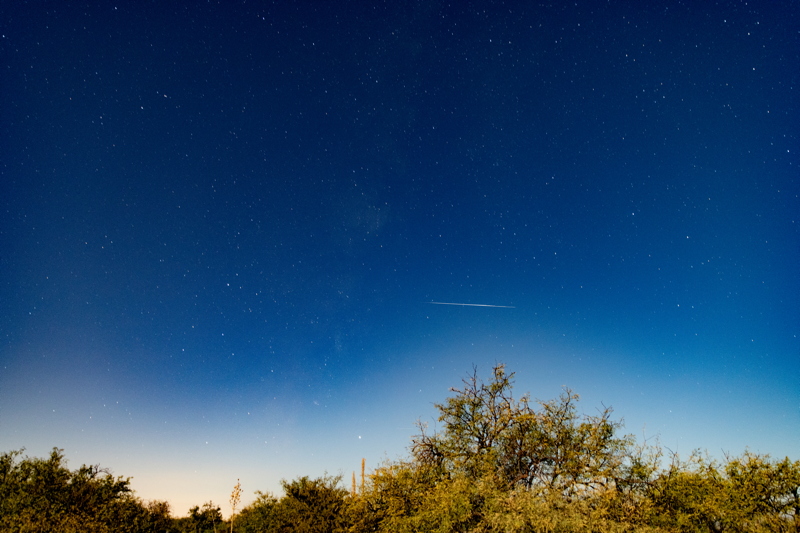
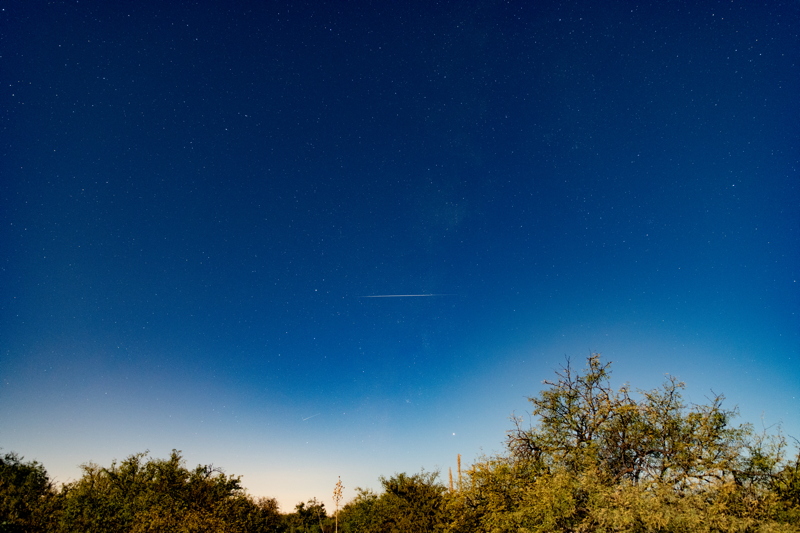
The nearly Full Moon had risen over the hill to the east and was illuminating the trees in the photos. This photo is a magnified area of the last photo showing the Starlink satellites train.

While the satellites will dim as their orbits are raised, based on my observations of the first batch of Starlink satellites after they reached their final higher orbits, the SpaceX Starlink system (with between 12,000 and 30,000) will forever change the night sky for the worse. As I stated in my initial report in May 2019, living in a rural area where satellite Internet access is the only viable option (I'm on HughesNet), I understand the need for high speed, low latency, satellite connections to the Internet. However, the concept used by SpaceX (and other companies) is a serious problem that needs addressing now by these companies and the astronomical community.
After the pass was over I began preparing to test the Starizona Filter Slider System. I slewed the telescope to the Moon and observed it, 102X. I then inserted each of the three Optolong filters in a drawer. I mounted the D850 DSLR to the 12" telescope using the Filter System. I focused the Moon and took this photo (1/320sec, ISO 100).

I then took photos of the Moon through each of the filters (1/250sec, ISO 3200) without refocusing.
SII
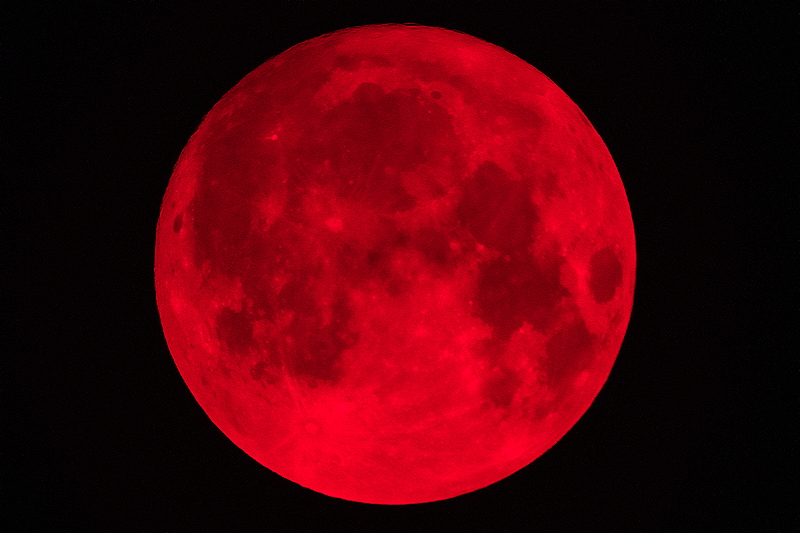
HA
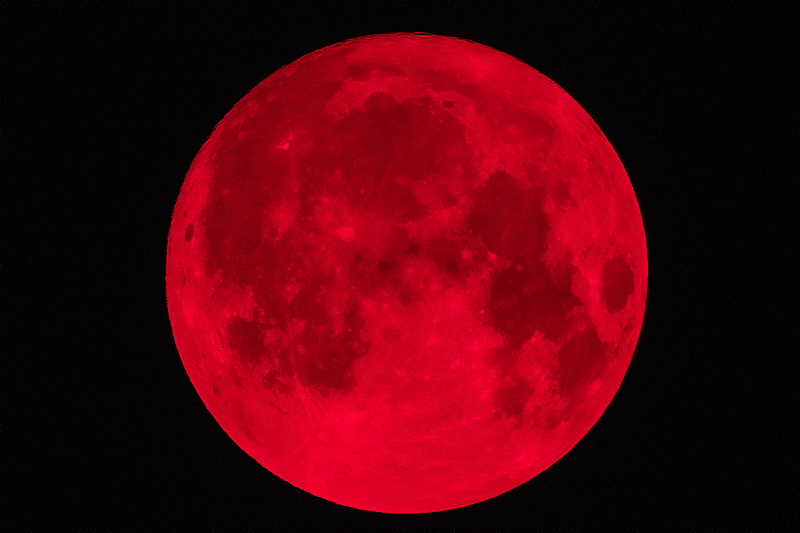
OIII
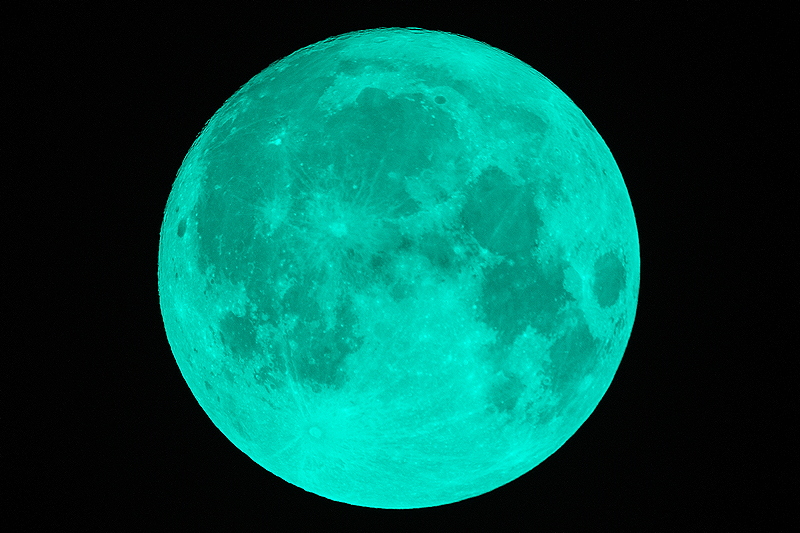
No obvious focus change appears in the photos. The ease of swapping filters with the Starizona Filter System became evident very quickly and I am really liking it. I may want to make a box for the three drawers with the filters inserted. Using the plastic bags the drawers came in doesn't provide much protection for the glass filters.
After the long day which began with the Transit of Mercury I decided to not do any Deep Sky Object imaging using the filters this night.
1947 MST: LX600 OFF.
|
Close: Monday, 11 November 2019, 2000 MST Temperature: 64°F |
Session Length: 1h 53m Conditions: Clear |
Comments are welcome using Email. Twitter users can use the button below to tweet this report to their followers. Thanks.
Cassiopeia Observatory Home Page
Copyright ©2019 Michael L. Weasner / mweasner@me.com
URL = http://www.weasner.com/co/Reports/2019/11/12/index.html
